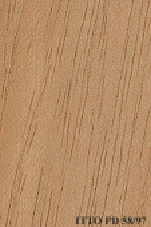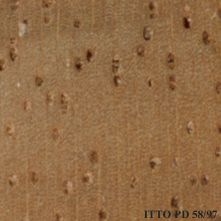
SAQUI-SAQUI, CEIBA TOLUA (Bombacopsis quinata)
Trade Name
Saqui-saqui, Ceiba tolua
Scientific Name
Bombacopsis quinata (Jacq.) Dugand
Family
BOMBACACEAE
Common Names
Tolua; Tolu; Sumauma de tirra ferme; Sumauma; Coton; Ceiba tolua; Ceiba del tolu; Ceiba colarado; Cedrillo; Cartageno; Cedro Macho (Costa Rica); Huimba (Peru); Ceiba (Ecuador); Ceiba Colorada; Caoba Bastarda; Cedro Dulce (Venezuela); Saqui-Saqui (Venezuela); Pochote; Murea (Venezuela); Ceiba Tolúa (Colombia); Cedro Macho (Colombia); Cedro Espinoso (Panama); Cedro Espino; Sumauma De Tierra Firme; Saqui; Lanillo; Masguara; Jaris; Ceiba Tolú; Ceiba Macho; Espinoso; Mahot Coton (United States of America)
Scientific Name Synonyms
Pachira quinata (Jacq.) W.S. Alverson; Bombax quinatum Jacq
Description Of The Tree
Botanical Description
It is reported to attain heights of up to 40 m, with cylindrical and straight boles up to 20 m long. The diameter is commonly 80 cm in diameter. The tree is covered with prickles, and it usually develops irregular stems.
Natural Habitat
Bombacopsis quinata is found in tropical rain forests, in well drained soils, on the upper slopes of hills and ridges. Burning, overexploitation of the timber and increasing settlement and conversion of the habitat for agriculture are causing population a
Natural Distribution
This species is found from southern Honduras to northern Colombia and Venezuela, it occurs in the more open forests of Nicaragua, Costa Rica, and Panama.
Plantations Available?
The species is grown in small-scale species trials in Kenya and the Solomon Islands.
Wood Identification
Anatomic Description Of Wood
Wood diffuse porous. Vessels solitary and in short radial multiples. Tangential diameter of vessel lumina 200 micras or more (large). Tyloses common. Vessels per mm2 less than 6 (rare). Simple perforation plates. Vessel-ray pits larger than the intervessel pits Occasionally axial parenchyma in marginal or in seemingly marginal bands. Apotracheal axial parenchyma diffuse and/or diffuse in aggregates. Axial parenchyma storied. Prismatic crystals in non-chambered axial parenchyma cells. Occasionally prismatic crystals 4 to 10 rays per mm (medium). Occasionally rays storied. Larger rays more than 4 seriate. Occasionally prismatic crystals in the ray cells. Heterogeneous rays and/or multiseriate heterogeneous rays. Body ray cells procumbent with one row of upright and/or squa Septate fibers present. Fibers with simple to minutely bordered pits.
-
 Wood Macro Photo Tangential Plane
Wood Macro Photo Tangential Plane
-
 Wood Micro Photo Of Transversal Section
Wood Micro Photo Of Transversal Section
Availability
Cites Status
Unrestricted
General Wood Description
Odor
It has no discernible odor.
Color
The sapwood is pale yellow-white in color, it is distinct from the heartwood. The heartwood is reddish brown.
COLOR INDEX (1=Black, 7=Light yellow,white)
5
Grain
The grain is straight to interlocked.
Texture
The wood is coarse textured.
Luster
Luster is described as medium.
Natural Durability
It is resistant to white-rot fungi and very durable to brown-rot fungi, but vulnerable to attack by dry-wood and subterranean termites. It has good resistance to marine borers.
Natural durability index (1= Very high durability, 7=Vey low durability)
3
Resistance To Impregnation
The heartwood is very difficult to treat with preservatives. The sapwood is moderately permeable with irregular penetration.
Wood Physical Properties
Basic Density or Specific Gravity (O.D. weight/vol. green) (g/cm³)
0.47
Air-dry Density (Weight and volume at 12%MC) (g/cm³)
0.51
Total shrinkage Tangential (Saturated to 0%MC) (%)
5.7
Total shrinkage Radial (Saturated to 0%MC) (%)
3.7
Drying Defects
Ease of Drying: Drying is reported to be rapid with almost no degrade.
Recommended Dry Kiln Schedule
JUNAC-A
Dimensional stability ratio (Total Tangential Shrinkage %/Total Radial Shrinkage %)
1.5
Wood Chemical Properties
Wood Mechanical Properties
Bending Strength (MOR),12%MC (kgf/cm²)
714
Stiffness (MOE) 12%MC (kgf/cm²)
97956
Compression parallel to fiber 12%MC (kgf/cm²)
393
Compression perpendicular to fiber 12%MC (kgf/cm²)
48
Shear strength radial 12%MC (kgf/cm²)
58
Janka hardness (side) 12%MC (kgf)
299
Janka hardness (end grain) 12%MC (kgf)
379
Workability
Sawing
The wood is reported to have low resistance to cutting.
Rotary Veneer Cutting
This species is interesting for peeling.
Sliced Veneer
This species is interesting for peeling.
Blunting Effect
Blunting effect on cutting edges is rated as slight.
Planing
Planing characteristics are reported to be good.
Boring
The wood is reported to have good boring properties.
Nailing
It has good nailing characteristics, with good nail holding.
Gluing
The wood is reported to glue well.
Sanding
Sanding properties are reported to be very good.
Finishing
It is reported to yield smooth surfaces in finishing.
Staining
Staining properties are rated as good.
Response To Hand Tools
Response to hand tools is rated as good.
REFERENCED USES
End Uses Summary
HOUSING GENERAL, panelling, fittings, shutter boards, FURNITURE AND CABINETS, PLYWOOD AND VENEER, common veneer, OTHER AND MUSICAL INSTRUMENTS, matches, moldings, particleboard, cementboard
General Housing
- 10 - Silica in Timbers
Paneling
- 18 - W3TROPICOS Missouri Botanical Garden
Fittings
- 19 - Silica in Timbers
Shutter Boards
- 20 - Prospect: The wood database
Furniture Cabinets
- 21 - Tropical timbers of the world. Part III-Southeast Asian and Oceanian Species.
Panels, Veneers
- 25 - Directory of Timber Trade Malaysia
Common Veneer
- 29 - Embassy of Ecuador in Japan
Matches
- 71 - Proprietes physiques et mecaniques des bois tropicaux, premier supplement
Molding
- 79 - Padronização da Nomenclatura Comercial Brasileira das Madeiras Tropicais Amazônicas, Sugestão
Particleboard
- 80 - Estudio Integral de la Madera para Construcción
Cementboard
- 81 - Madeiras da Amazônia: descrição do lenho de 40 espécies ocorrentes na Floresta Nacional do Tapajós
Please Provide Information To View Producer Information